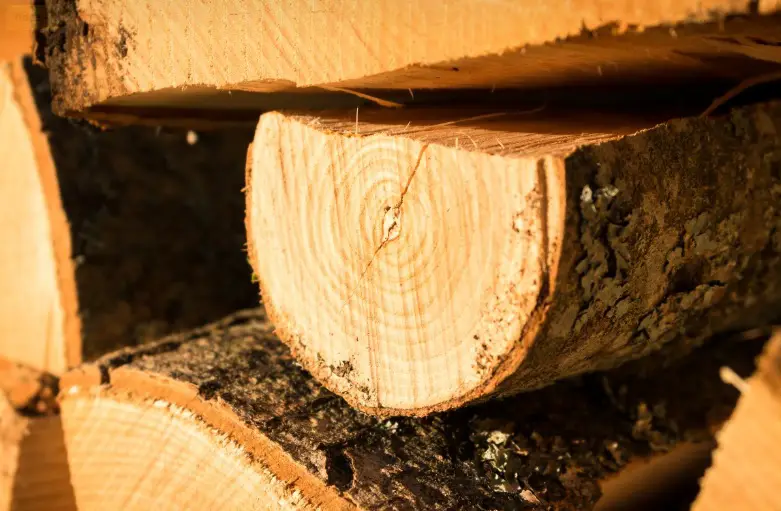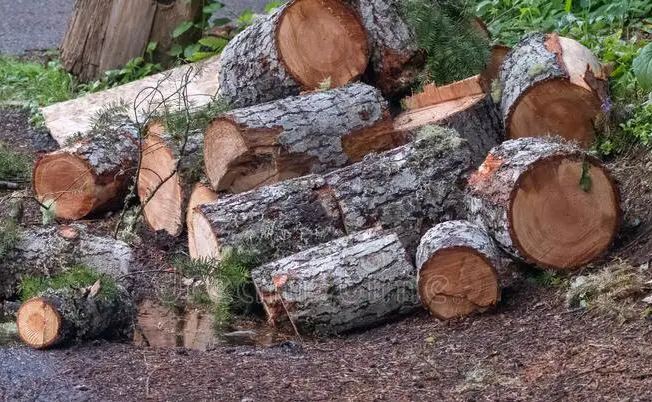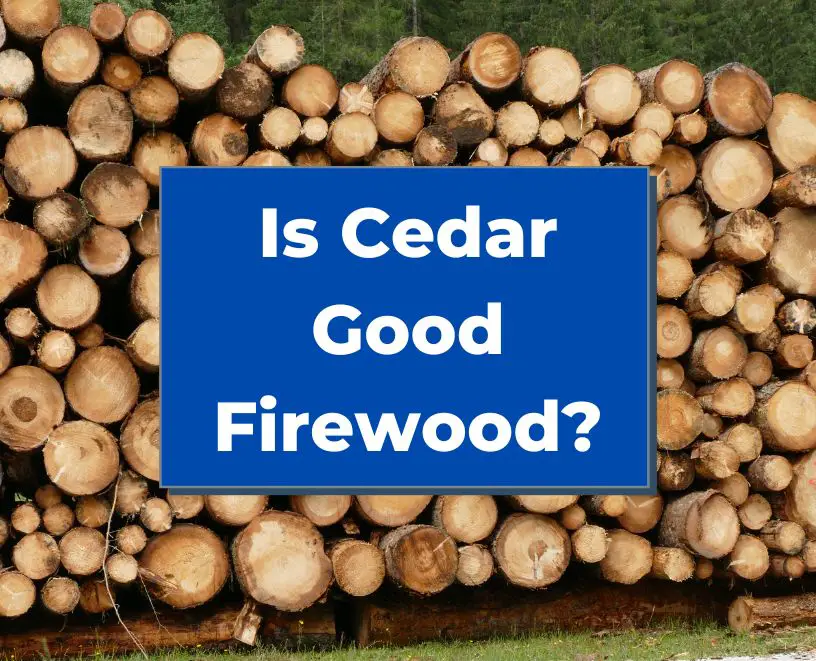Nothing’s better than the crackle and warmth of a fire, whether that’s a campfire, fire pit, or even your fireplace. Sometimes you want to keep the fire going but don’t have the ideal wood on hand, so you’ve got to use what’s available, including cedar. So, is cedar good firewood?
Cedar can be safely used as firewood and produces good heat, but it’s not the best choice because it burns fast. It also makes more smoke, sparks, and creosote when burned compared to other woods.
We’ll go further in depth about using cedar as firewood along with some pros and cons of using cedar in your fire in today’s guide.
Does Cedar Make Good Firewood?

If you’re looking to get a fire going and all you’ve got is cedar, don’t worry: cedar is safe to use and is not on the list of toxic woods to burn. Also, cedar has a really pleasant smell which is a plus!
Because it burns fast, it is actually quite good when used for kindling, but there are some drawbacks to consider before choosing cedar as your firewood.
Pros Of Burning Cedar
Cedar is convenient as a firewood because it burns fast, which makes it great for kindling and starting a fire, or keeping a fire going in the firepit.
Cedar also has a delightfully spicy aroma that’s calming, making it a popular wood.
It is also easy to split, which is a definite plus if you’re the one chopping the wood.
Last but not least, cedar is resistant to pests and fungus.
Cons Of Cedar Firewood
So we covered that cedar smells good, burns fast, and splits easily. What’s not to love? Let’s go through the reasons why cedar isn’t the best choice for a fire.
First, cedar has a high oil content, which makes it smoke and spark more than other woods. So unless your fire pit has a screen or lid, you have to watch out for flying embers and constantly be dodging smoke.
Sparking and popping creates a fire risk, so you’ll need to make sure you have some sort of screen or glass doors to protect yourself.
Second, that higher oil content means that cedar also creates higher levels of creosote than other fire woods, so you’ll want to avoid burning it in an indoor fireplace if possible.
Cedar Firewood Heat Production
The heat produced by firewood depends on the species, moisture content, and burning conditions of the wood.
Cedar is a type of softwood that has a high resin content and a low density, which is why it burns hot and fast but produces higher creosote and smoke than hardwoods do.
Cedar produces 13 to 18.2 million BTUs (British Thermal Units) from one cord (or 128 cubic feet) of seasoned firewood.
Seasoned firewood means that it has been dried for a minimum of six months to dry it out.
By comparison, hardwoods like maple or oak can make 20 to 30 million BTUs from a single cord of seasoned wood, making them much better for producing heat.
Burning one cord of seasoned Cedar firewood is equivalent to 138 gallons of propane, nearly 3,700 kilowatt hours of electricity, 12,150 cubic feet of natural gas, or 91 gallons of heating oil.
The bottom line is that burning cedar firewood is not the best for heating purposes because it burns quickly and produces less heat than other wood types.
How Long To Season Cedar

Cedar wood can be seasoned in about 9 months in the best conditions, but seasoning process usually takes 12 months.
You don’t want to burn green (unseasoned) wood as it will produce tons of smoke and is very unpleasant.
Most seasoned firewood has a moisture content of 20 percent or lower. Anything higher than that will be hard to light, make more smoke, and produce higher levels of creosote.
Cedar can have up to a 50 percent moisture content when it’s green, so giving it proper time to season before burning it is very important.
Types And Species Of Cedar
The most common species of cedar found in North America are the Eastern Red Cedar and Western Red Cedar.
These are the two types of cedar trees that you’ll most often find used as firewood in the U.S.
The Eastern Red Cedar, also known as the Eastern Juniper, grows along the East coast and can grow up to 65 feet tall and up to 39 inches round.
The Western Red Cedar can grow over 200 feet tall and over 12 feet in diameter, and are found in the Pacific Northwest in the US.
“True” cedar trees are native to the Mediterranean and Himilayans, and include the Atlas Cedar, Cedar of Lebanon, Deodar Cedar, and the Cyprian Cedar.
Burning Cedar Firewood FAQs
Cedar sparks and pops more often and produces more creosote than other woods, so you should avoid burning it in your fireplace if possible.
If you must burn cedar in your wood stove or fireplace, be sure to use a screen or glass doors, and clean your chimney often to reduce the buildup of creosote.
Cedar is an excellent choice for campfires because it lights easily, burns fast, and smells great.
Be careful to watch for pops and sparks, and you will get a greater amount of smoke from cedar versus other woods, but it’s still a great option for burning in a campfire.
Yes, cedar is fine to burn in a firepit. Use a cover with your firepit to protect yourself from sparks and pops, and use medium-sized cedar logs so you can get longer burning time.

